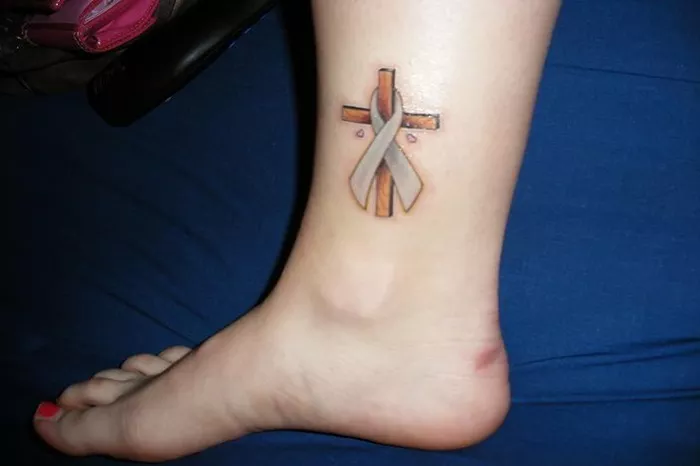A cancer diagnosis can be a life-altering event, but it can also be an opportunity for personal growth and empowerment. Cancer tattoos have become increasingly popular as a way for survivors and their loved ones to express their journey, commemorate their battle, and reclaim their identity after treatment.
The Meaning and Significance of Cancer Tattoos
Cancer tattoos can symbolize a wide range of emotions, experiences, and milestones in the cancer journey. They can be:
A celebration of survival: A tattoo can serve as a permanent reminder of overcoming adversity and achieving remission.
A tribute to loved ones: Survivors may get tattoos in honor of family members, friends, or caregivers who have supported them through their treatment.
A symbol of hope and inspiration: Cancer tattoos can be a source of motivation and encouragement for survivors and others who are facing similar challenges.
A way to reclaim body image: After surgery or other treatments that have altered their appearance, survivors may use tattoos to reclaim their sense of identity and self-acceptance.
Choosing a Design:
When selecting a cancer tattoo design, there are many factors to consider, including:
Personal symbolism: Choose a design that has special meaning to you, such as a symbol of your favorite animal, flower, or hobby.
Treatment type: Some tattoos may be specific to the type of cancer you have or the treatments you have undergone, such as a mastectomy scar tattoo.
Location: Consider the placement of your tattoo, as this may affect its visibility and meaning.
Style: Cancer tattoos can come in a variety of styles, from realistic to abstract to symbolic. Choose a style that appeals to you and complements your personal style.
Popular Cancer Tattoo Designs:
Some of the most common cancer tattoo designs include:
Pink ribbon: The pink ribbon is a symbol of breast cancer awareness and support.
Cancer-specific symbols: Some cancers have specific symbols associated with them, such as the butterfly for thyroid cancer or the semicolon for colon cancer.
Anatomical designs: Survivors may choose to tattoo an image of the affected body part or organ, such as a breast or lung.
Inspirational quotes: Words or phrases that provide motivation and encouragement can be incorporated into a cancer tattoo.
Warrior imagery: Symbols of strength and courage, such as a sword, shield, or phoenix, can represent the survivor’s battle against cancer.
Placement Options:
The placement of your cancer tattoo is a personal choice that depends on factors such as your body type, lifestyle, and the size of the design. Popular placement options include:
Chest: Over the heart or on the breast (for breast cancer survivors)
Shoulder or upper arm: A visible location that can be easily admired
Lower back: A discreet and less visible option
Foot or ankle: A meaningful and symbolic placement
Scar camouflage: A tattoo can be used to cover or minimize the appearance of a surgical scar
Other Considerations:
When getting a cancer tattoo, it is important to:
Choose a reputable and experienced tattoo artist: This will ensure that your tattoo is safe and well-executed.
Consider your skin type and health: Some skin types and medical conditions may affect the healing process or the appearance of the tattoo.
Be prepared for aftercare: Follow your artist’s instructions carefully to ensure the tattoo heals properly.
Embrace your tattoo as a symbol of empowerment: Your cancer tattoo is a unique and personal expression of your journey. Wear it with pride and allow it to inspire you in your continued recovery.
Conclusion:
Cancer tattoos are a powerful and meaningful way for survivors to commemorate their battle, reclaim their identity, and find joy in the healing process. By choosing a design that is deeply personal and meaningful, survivors can create a permanent reminder of their strength, resilience, and triumph over adversity.
FAQS
Should cancer patients get tattoos?
Whether or not cancer patients should get tattoos is a personal decision. There is no medical reason why cancer patients cannot get tattoos, but there are a few things to consider.
First, cancer patients should make sure that their immune system is strong enough to handle the tattooing process. This is especially important for patients who are undergoing chemotherapy or radiation therapy, as these treatments can weaken the immune system.
Second, cancer patients should be aware that tattoos may interact with certain medical treatments. For example, some MRI machines use magnets, which can cause tattoos to swell or burn. It is important to talk to your doctor before getting a tattoo if you are planning to have any medical treatments in the future.
Finally, cancer patients should choose a tattoo artist who is experienced in working with cancer patients. This will help to ensure that the tattoo is done safely and with the utmost care.
What are the tattoos for cancer treatment?
There are a few different types of tattoos that can be used for cancer treatment. One type is called a radiation tattoo. Radiation tattoos are small, permanent marks that are placed on the skin to help radiation therapists target the area to be treated. These tattoos are typically very small and are not visible to the naked eye.
Another type of tattoo that can be used for cancer treatment is called a medical tattoo. Medical tattoos are used to identify patients who have certain medical conditions, such as diabetes or allergies. These tattoos can be used to alert medical professionals to the patient’s condition in case of an emergency.
Finally, some cancer patients choose to get tattoos as a way to express themselves and to cope with their diagnosis. These tattoos can be anything from small symbols to large, elaborate pieces. They can be a way for cancer patients to reclaim their bodies and to show their strength and resilience.
Ultimately, the decision of whether or not to get a tattoo is a personal one. Cancer patients should weigh the benefits and risks involved and make the decision that is best for them.

